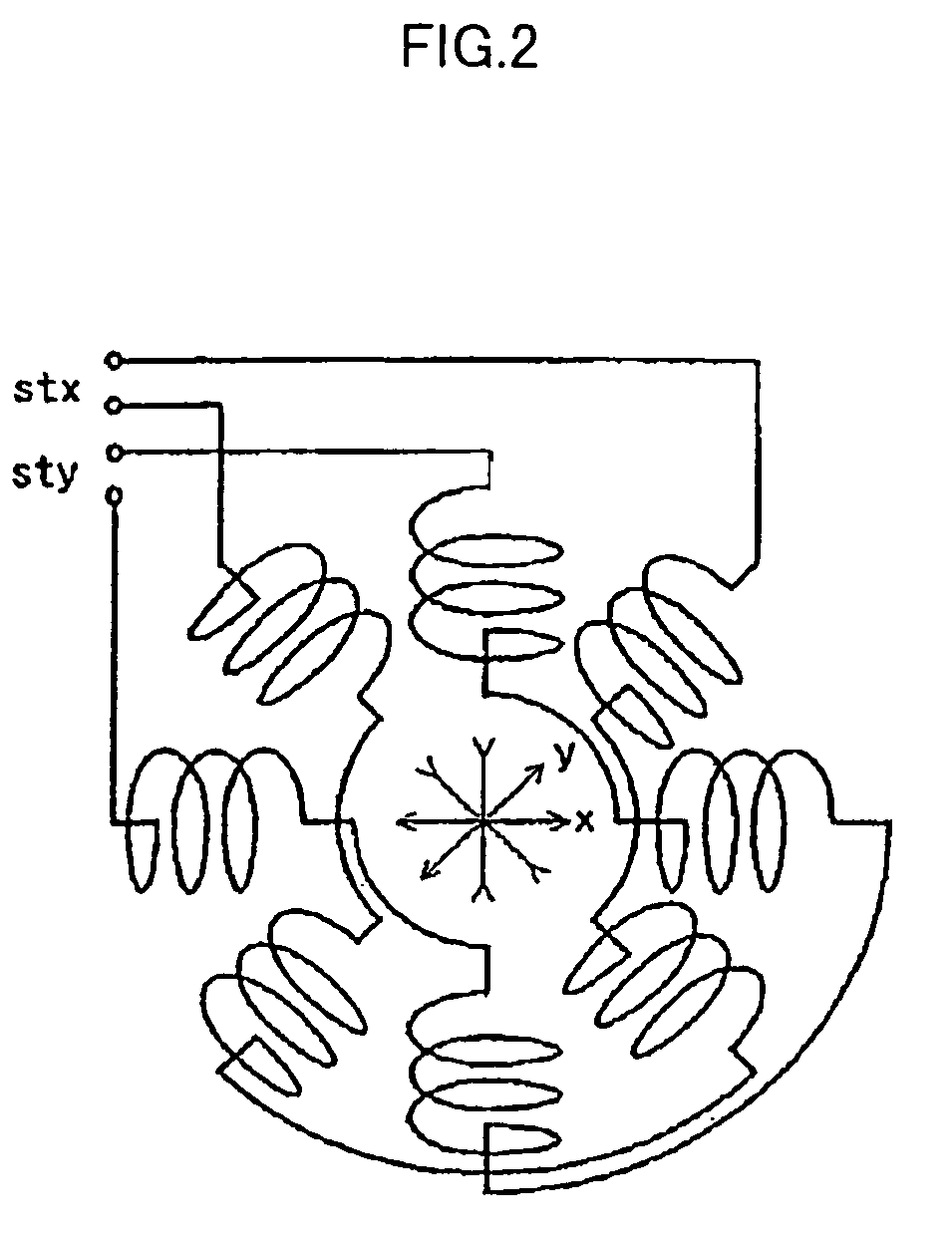Charged particle beam apparatus and automatic astigmatism adjustment method
a technology of chargeable particle beam and astigmatism adjustment, which is applied in the direction of optical radiation measurement, instruments, heat measurement, etc., can solve the problems of deteriorating length measurement performance, inspection sensitivity, and degradation of electron beam image quality, and achieve high degree of accuracy and minimize damage to subject samples
- Summary
- Abstract
- Description
- Claims
- Application Information
AI Technical Summary
Benefits of technology
Problems solved by technology
Method used
Image
Examples
first embodiment
[0078]As a first embodiment, the particle detector 16 is used for detecting and observing a particle image by radiating a charged particle beam to a sample (target) 62 for automatic astigmatism correction based on a pattern with a direction varying from area to area as shown in FIG. 7(a) in a scanning operation. The directional sharpness magnitude dθ is found by measuring the amplitude of a particle image in each of the areas. The amplitude can be found by calculating the difference between the maximum value of s (x, y) and the minimum value of s (x, y) for each of the areas, or by calculating the differential (V=Σxy (s (x, y)−smean)2 / N) of the concentration value (or the gradation value) s (x, y) of the particle image for each of the areas. As an alternative, the sum Σxy|t (x, y)| where |t (x, y)| is the absolute value of a differential t (x, y) of a 2 dimensional differential result s (x, y) of typically Laplacian and the sum of squares Σxy (t (x, y)2 are found. The sum found in t...
second embodiment
[0079]A second embodiment implements a sample 20 or a calibration target 62 with a pattern like one shown in FIG. 7(b), and finds the directional sharpness magnitude dθ by calculating directional differentials for a particle image detected by the particle detector 16. A directional differentiation is implemented by carrying out convolution processing for an image on a mask like one shown in the figure. Then, a sum of squares of values at points for an image obtained as a result of the differentiation is computed as a directional sharpness magnitude dθ. It should be noted that the differentiation mask shown in the figure is typical. That is, the use of this mask is not mandatory. Any mask can be used as long as a requirement for a mask used for computing directional differentials is satisfied. The requirement is that 2 values at any 2 positions symmetrical with respect to a certain axis have signs opposite to each other but about equal magnitudes. There are a variety of achievable di...
PUM
 Login to View More
Login to View More Abstract
Description
Claims
Application Information
 Login to View More
Login to View More - R&D
- Intellectual Property
- Life Sciences
- Materials
- Tech Scout
- Unparalleled Data Quality
- Higher Quality Content
- 60% Fewer Hallucinations
Browse by: Latest US Patents, China's latest patents, Technical Efficacy Thesaurus, Application Domain, Technology Topic, Popular Technical Reports.
© 2025 PatSnap. All rights reserved.Legal|Privacy policy|Modern Slavery Act Transparency Statement|Sitemap|About US| Contact US: help@patsnap.com



